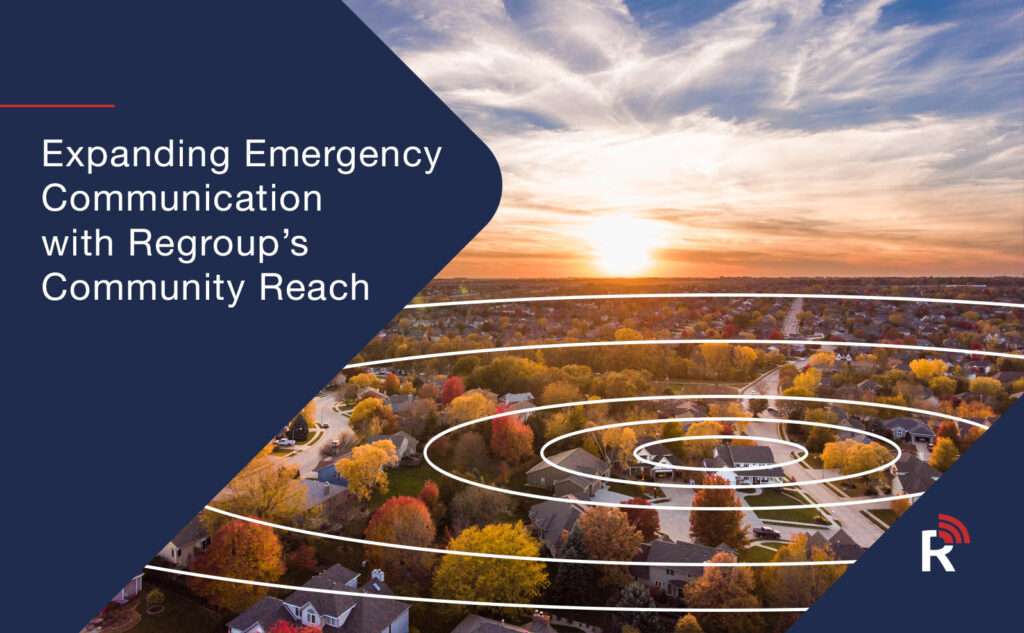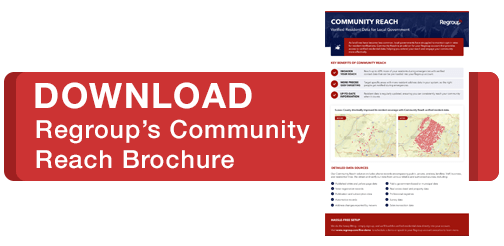
Expanding Emergency Communication with Regroup’s Community Reach
In today’s digital-first world, local governments face a growing challenge: reaching residents quickly and reliably during emergencies. As landlines become less common and opt-in rates for notification systems decline, many municipalities struggle to maintain effective communication with their communities. That’s where Regroup’s Community Reach comes in—a powerful add-on that helps government agencies dramatically expand their reach using verified residential data.
What Is Community Reach?
Community Reach is a feature within Regroup’s mass notification platform specifically for local governments. It provides access to verified contact data—phone numbers, addresses, and more—sourced from a wide range of reliable databases. This data can be pre-loaded into a government’s Regroup account, allowing for broader, faster, and more targeted communication during critical events.
Unlike traditional opt-in systems, which rely on residents signing up manually, Community Reach proactively equips agencies with the data they need to notify more people—without requiring additional action from the public.
Related Article: Text Alerts Beat Siren Systems for Safety
Why It Matters: The Decline of Landlines and Opt-In Challenges
Government agencies often hesitate to switch emergency notification systems due to concerns that their residents will be forced to re-register, creating a barrier to communication. However, Regroup’s Community Reach feature alleviates this worry by allowing agencies to integrate and retain existing resident data seamlessly. That means there are no additional hoops for citizens to jump through, ensuring a smooth transition and continuous, reliable communication during critical events.
Historically, emergency alerts were sent via landlines using reverse 911 systems; however, with the rise of mobile phones and VoIP services, landline usage has plummeted. At the same time, opt-in rates for emergency notification platforms remain low, leaving most of the population unreachable during crises.
Community Reach addresses this problem by tapping into verified data sources to fill in the gaps—ensuring that even residents who haven’t opted in can still receive life-saving alerts.
Related Article: Strengthen Organizational Safety with Threat Intelligence
Key Benefits of Community Reach
Regroup’s Community Reach offers advantages for government agencies seeking to enhance their emergency communication strategies. By moving beyond the limitations of traditional systems, Community Reach provides a more comprehensive, accurate, and efficient way to connect with residents when it matters most. Explore the key benefits that make Community Reach an indispensable tool for modern emergency preparedness.
1. Broaden Your Reach
Community Reach can help agencies reach up to 60% more residents during emergencies. By leveraging verified contact data, governments can notify individuals whom opt-in-only systems would otherwise miss.
2. More Precise Geofencing
With enhanced address data, agencies can target specific neighborhoods, streets, or zones—ensuring that alerts are relevant and localized. That is especially useful for weather events, evacuations, utility outages, and localized threats, as it triggers an alert when someone enters or exits a specific area.
3. Up-to-Date Information
Resident data is regularly updated, so agencies can rely on accurate contact details when it matters most. That reduces the risk of outdated or incorrect information during time-sensitive situations.
4. Hassle-Free Setup
Regroup handles the heavy lifting. Once a government agency signs up for Community Reach, Regroup loads the verified data directly into their account—no manual entry or data wrangling required.
Related Article: Regroup Wins 2025 Secure Campus Award for Emergency & Mass Notification
All About the Data
To truly understand the power of Community Reach, it’s essential to delve into the robust data sources that fuel its effectiveness and examine how it translates into tangible results for local governments.
Sussex County implemented Community Reach and saw a dramatic improvement in resident coverage. Before the rollout, their emergency notifications reached only a fraction of the population. After integrating verified data, their reach expanded significantly—allowing them to notify more residents during emergencies and improve overall community engagement.

Community Reach sources its verified residential data from a wide array of trusted and authorized databases, including:
- Published white pages
- Voter registration records
- Real estate deed and property data
- Address changes reported by movers
- Subscription and publication data
- Automotive records
- Professional registries
- Survey data
- Sales transaction data
- Public government and municipal databases
This comprehensive approach ensures that the contact data is both accurate and inclusive—covering public, private, wireless, landline, VoIP, business, and residential phone lines.
Related Article: Communication During Cybersecurity Threats
Ready to See Community Reach in Action?
In an era where timely communication can save lives, Regroup’s Community Reach offers local governments a smarter, more scalable way to connect with their communities. By removing the barriers of outdated systems and low opt-in rates, Community Reach empowers agencies to act swiftly and confidently—ensuring that no resident is left in the dark during a crisis.
Regroup takes a dynamic approach to emergency communications compared to traditional mass notification tools. Creating an easy-to-use platform is the foundation for Regroup to handle routine and emergency alerts.
If you’re ready to explore a better way of communication, discover our collection of case studies, blogs, and free resources to learn more.
Schedule a live demo or speak with your Regroup account executive to learn how your agency can benefit.
Book a DemoTable of Contents
Categories
- Business
- Transportation
- Small Business
- Manufacturing
- Banking Finance
- Disaster Recovery
- Employee Safety
- Routine Communications
- Mass Notification
- Critical Event Management
- Emergency Preparedness
- Corporate
- Insurance
- Business Continuity
- Business Case Studies
- Uncategorized
- Education
- Regroup Product Guides
- Nonprofit
- Healthcare
- Hospitality
- Government & Public Services
- Our Clients
- Awards
- Blog
- COVID-19
- Safety & Preparedness
- News
- Announcements
